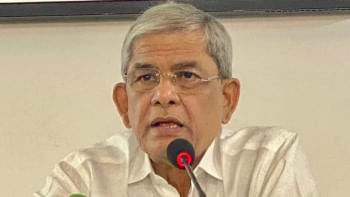2017: Time for Asia to take risks

A century ago, the 1917 Russian Revolution marked the end of the First World War, that changed the 20th century into a new divide between different ideologies.
Twenty years ago, the Asian financial crisis erupted in 1997, followed ten years later with the global financial crisis (more accurately the North Atlantic financial crisis).
Will 2017 mark the outbreak of another severe financial crisis, particularly in the emerging markets?
The common thread linking all four events is the US dollar.
In 1917, after the First World War nearly bankrupted Great Britain, the US dollar began its ascendancy over pound sterling, which was confirmed after the Second World War three decades later.
The Latin American crisis of the 1980s and the 1990s Asian financial crisis were associated with periods of dollar strengthening.
The US subprime crisis in 2007 was the result of the US not monitoring the fragility of the mortgage market, super-charged by toxic derivatives and sold by over leveraged investment banks.
But the dollar's role became pre-eminent when the Eurozone debt crisis broke out in 2008, because it was the swaps by the Fed with five major central banks that provided the liquidity to contain worldwide crisis contagion.
The 2007 global financial crisis marked a watershed in global economic affairs.
Many thought that the crisis that hurt the US and Europe would confirm the rise of the emerging markets, especially the BRICS economies.
Initially the emerging markets, particularly the commodity producers, powered ahead, after China embarked on its 2009 investment splurge.
But once China slowed down to correct its credit excesses in 2014, commodity prices collapsed.
Today, many emerging markets, including those in Asia, are facing declining trade, lower balance of payments surpluses, slower growth and loss in foreign exchange reserves.
In November 2016, when American businessman Donald Trump unexpectedly won the US Presidential elections, there was another dollar tantrum, in which capital flew out of the emerging markets, causing sharp depreciation pressure on almost all currencies, including the Chinese RMB.
In a recent review of Asia in the global economy, Fed Governor Jerome Powell argued that the global trade slowdown may be structural and that emerging markets may have to re-think their export-led growth strategy.
Competing depreciation of emerging market currencies may be self-defeating, since recent research by the BIS showed that growth and exchange rate appreciation are positively correlated, particularly for the emerging markets.
The problem is not that emerging economy growth or currencies are weak, but that the dollar is stronger.
The April 2016 BIS Triennial FX survey showed that the dollar retained its position as the dominant reserve currency, accounting for 88 percent of currency trading (in pairs), equivalent to 44 percent of all foreign exchange trading.
The survey also showed that emerging market currencies, particularly the Renminbi, had gained ground in market turnover at the expense of the Euro, Sterling and Yen.
But the emerging market currency trading was paired mainly against the US dollar, reinforcing its premier position.
The US economic recovery demonstrates the old dictum that he who reforms fastest is the first to recover after a crisis.
Ten years after the 2007 crisis, there are still doubts over structural reforms in Europe and Japan, whereas the lack of reform progress in many Asian economies has slowed their ability to respond to the return of a strong dollar.
The real reason why a strong dollar is associated with slower global trade is that with trade denominated in dollars, any volatility in non-dollar currencies widens the credit and currency spreads that make trade more expensive.
Furthermore, the new banking reforms restrict the role of US and European banks in market-making foreign exchange business, making offshore dollars more expensive than onshore dollars.
Here-in lies the dilemma facing Asian exporters. As competition narrows the margins from export trade, currency depreciation in local currency widens the transaction costs, making exports less profitable and imports more costly.
The obvious strategy, as recommended by Powell, is to switch to domestic consumption, but many smaller Asian economies do not have large domestic markets.
Moreover, as China, India and other larger emerging economies begin to upgrade their productivity and competitiveness, smaller middle-income economies will find their manufacturing sectors hollowing out.
There is a risk that countries will protect their economies with various forms of capital controls, which effectively create more barriers to trade.
Global trade is not going to be helped by the likely collapse of the Trans-Pacific Partnership (TPP), which Trump openly opposes.
The Chinese-led Regional Comprehensive Economic Partnership (RCEP) to promote a free trade area amongst Asean countries and six major trading partners (China, Japan, South Korea, India, Australia and New Zealand) promises much, but will take time to reach agreement.
As the old Chinese saying goes, distant water cannot save nearby fires.
The irony facing Asia is that it remains a global growth region with surplus savings, but these savings are increasingly hoarded in dollars, rather than being channelled to many Asian economies that need foreign exchange to keep their growth momentum.
This begs the question whether Asian financial centres can become hubs to intermediate Asian savings to Asians and other emerging markets, rather than being sub-hubs of Wall Street and London.
As American and European banks begin to pull back to their home markets, under the weight of new regulations on risk-taking, Asian financial institutions are not quite ready to fill in the gaps, partly due to the exact same new risk-adverse regulations.
Asian regulators have themselves to blame for not appreciating that these global regulations are hampering their own economies' needs to grow. Growth is itself a risk. To be risk adverse, as these new regulations require, is to fear growth.
In other words, Asian policy makers must take bigger risks to overcome the mental and regulatory barriers that present headwinds against growth. At a time when the growing populations of Asia demand faster growth, no growth is the bigger risk.
Time to take some tough decisions.
The writer, a Distinguished Fellow with the Asia Global Institute of the University of Hong Kong, writes on global issues from an Asian perspective, for the Asia News Network.
This is a series of columns on global affairs written by top editors from members of the Asia News Network and published in newspapers across the region.

 For all latest news, follow The Daily Star's Google News channel.
For all latest news, follow The Daily Star's Google News channel. 



Comments